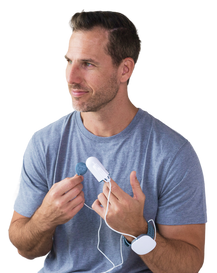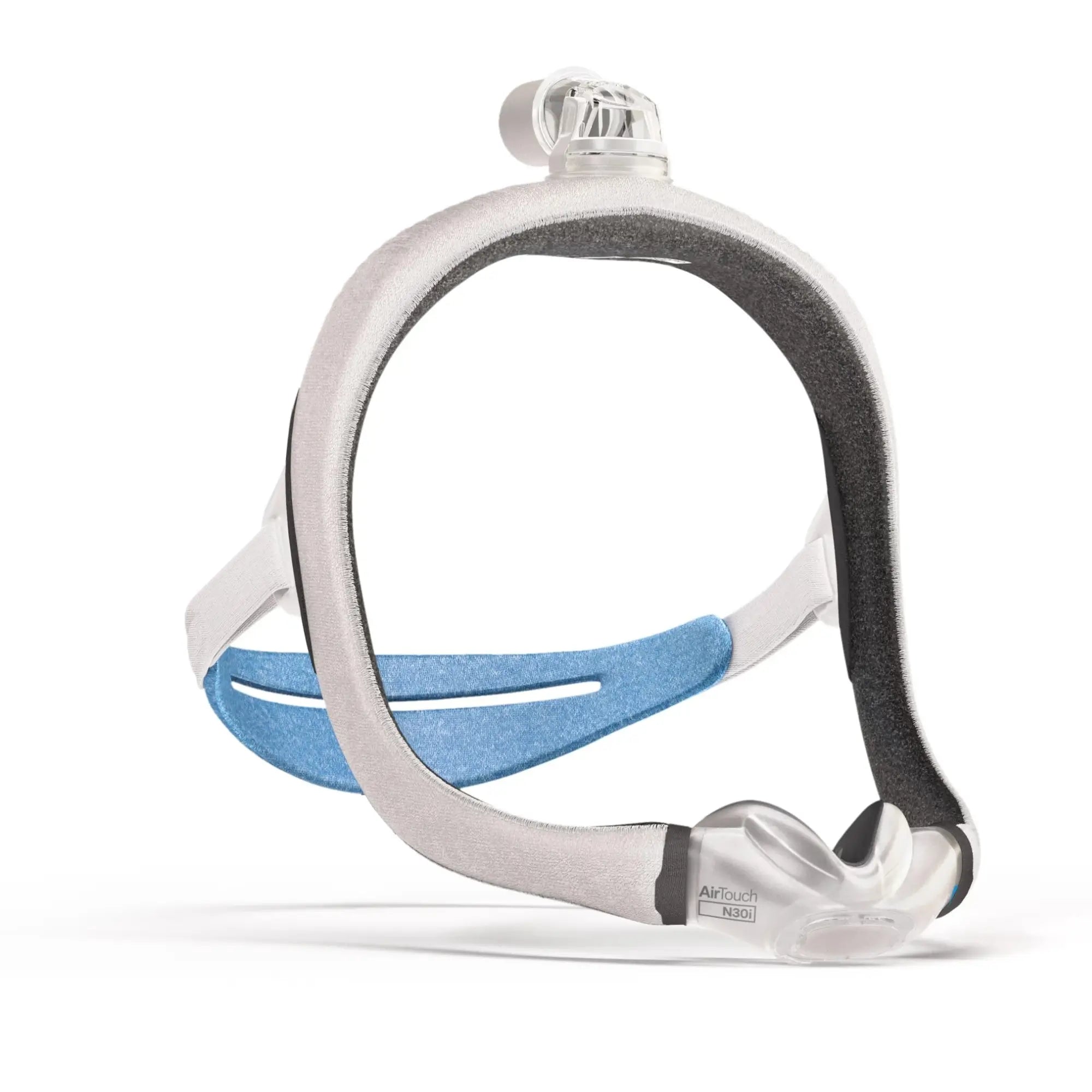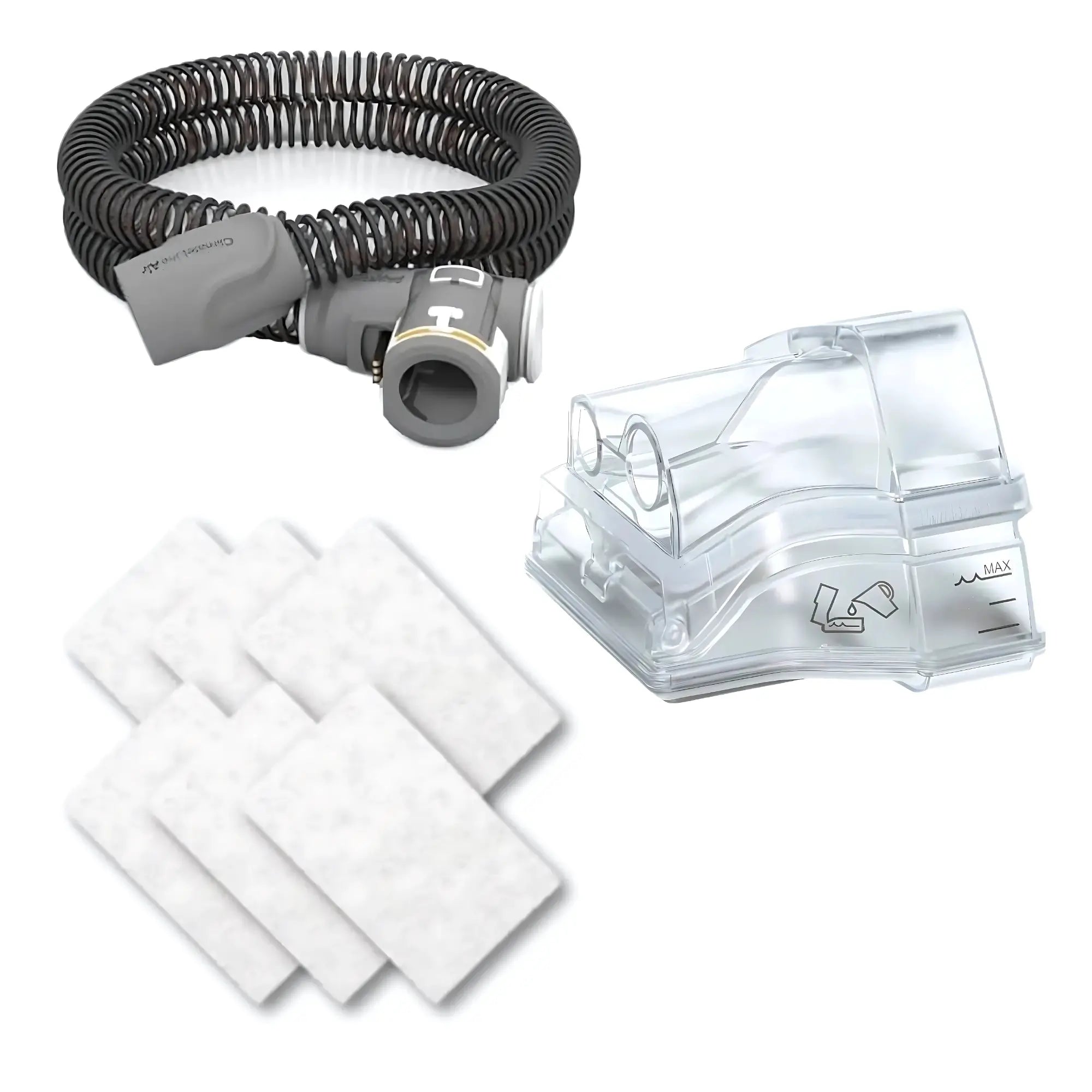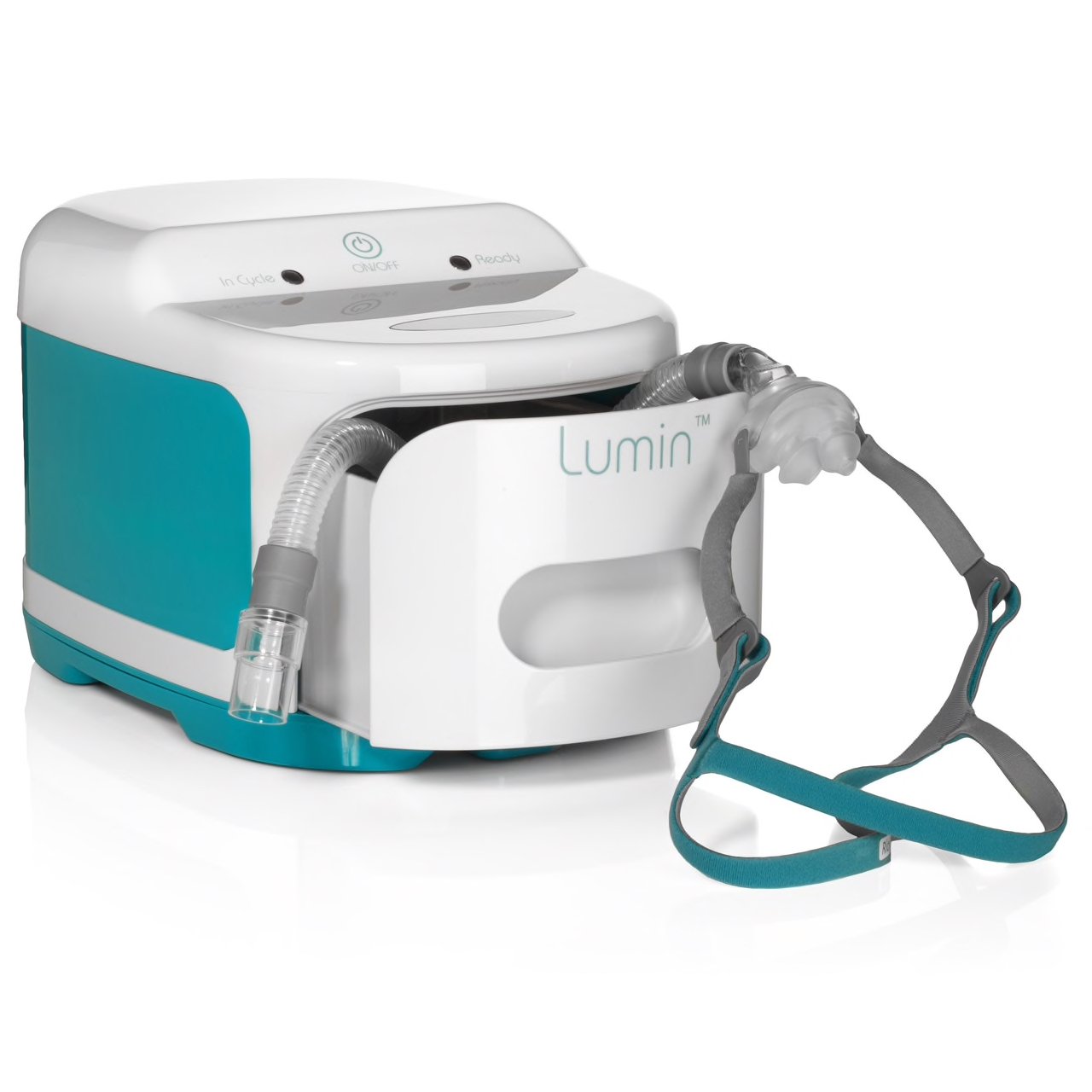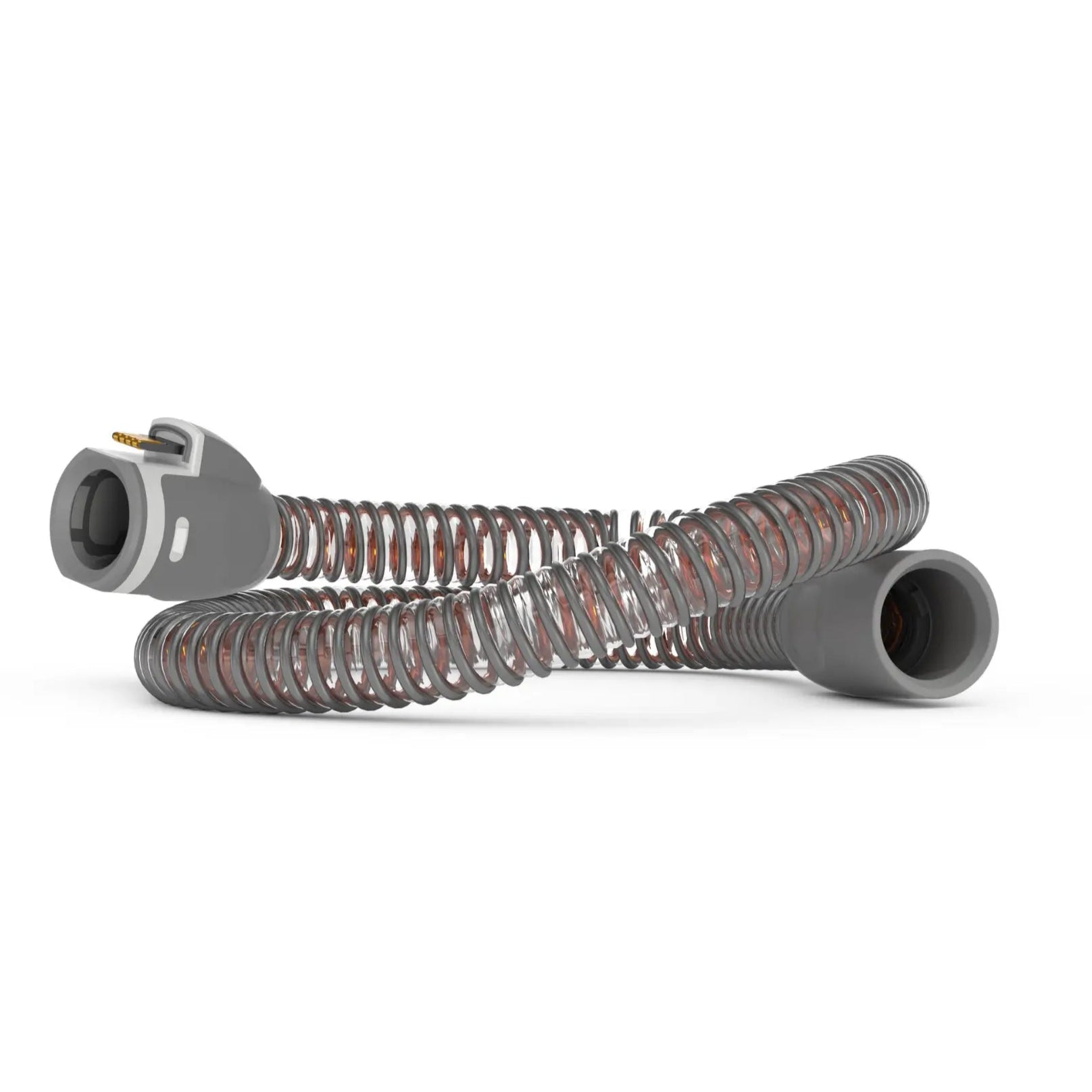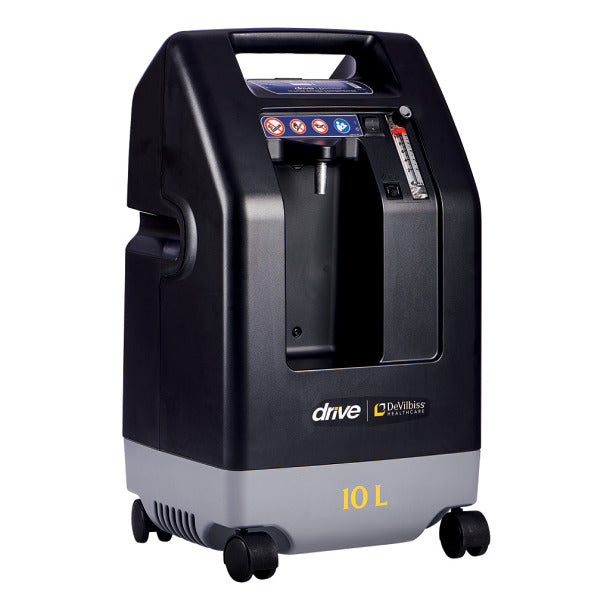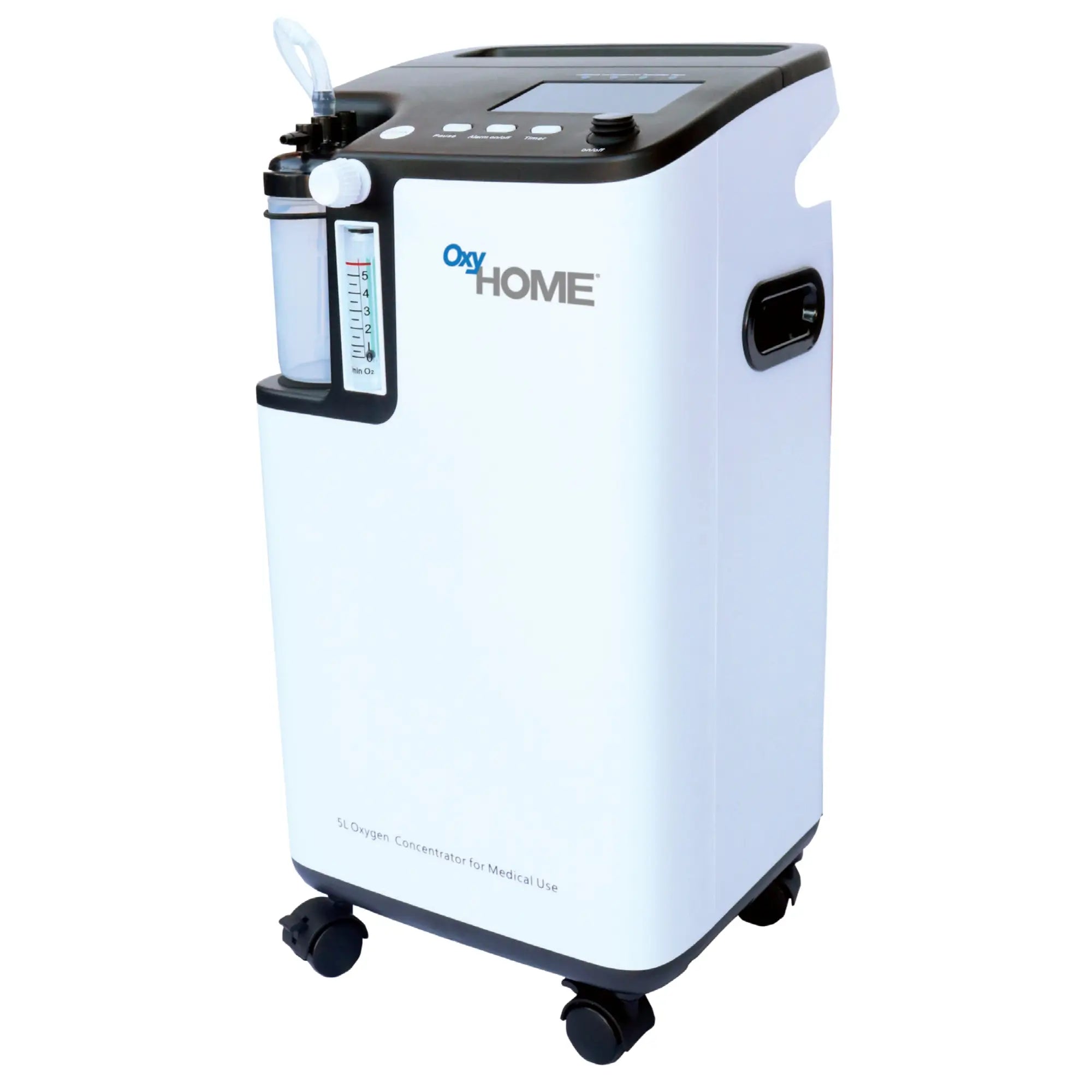Did you know that close to 70% of people with sleep apnea are also obese? [1] That's a significant number!
Sleep apnea is a serious condition where breathing repeatedly stops and starts during sleep due to airway blockages. This can lead to a cascade of problems, including reduced quality of life, daytime fatigue, and health risks like cardiovascular disease.
Sleep apnea and obesity are like a two-way street.
Excess weight, particularly around the neck and upper airway, can narrow the airway and make it more likely to collapse during sleep. On the other hand, sleep apnea can disrupt metabolism and contribute to weight gain through fatigue-induced inactivity.
You might wonder, "Is there any hope for those struggling with obesity and sleep apnea?"
This is where GLP-1 receptor agonists come in.
Approved by the FDA for weight loss, sleep apnea, and diabetes management, these medications work by mimicking a natural hormone that helps regulate appetite and blood sugar.
Research suggests that GLP-1 medications can improve obstructive sleep apnea by promoting weight loss and reducing airway fat deposits. This could lead to better sleep quality and overall health.
Let’s delve deeper into GLP-1 therapy and its potential impact on sleep apnea!
What is GLP-1?
Glucagon-Like Peptide-1 (GLP-1) is a hormone produced in your small intestine after you eat. [2] Think of it as your body's natural "fullness signal." GLP-1 plays a vital role in:
-
Appetite Regulation: GLP-1 makes you feel full, helping you eat less.
-
Glucose Regulation: It helps your body use insulin effectively, suppresses glucagon, and lowers blood sugar levels.
Overall, GLP-1 is essential for maintaining a healthy metabolism.
What Are GLP-1 Receptor Agonists? [3]
GLP-1 agonists are medications that mimic the actions of the GLP-1 hormone itself. The medications essentially amplify the natural effects of the GLP-1 hormone. Some common examples include liraglutide (Saxenda/Victoza), which is FDA-approved. [4]
Originally these medications were developed for treating type 2 diabetes, however, GLP-1 drugs have gained popularity for weight loss due to their ability to:
-
Reduce appetite and food intake: They help you feel fuller for longer, making it easier to resist cravings and overeating.
-
Promote significant, sustained weight loss: Many people experience substantial and long-lasting weight loss with these medications.
GLP-1’s Role in Sleep Apnea
Now, let's connect the dots. Weight loss is a cornerstone of managing sleep apnea severity. By reducing excess fat around the neck and airway, you create more space for airflow during sleep. So, GLP-1 medications help with weight loss, and that, in turn, helps curb sleep apnea drastically.
Let's explore this further in the next section.
How GLP-1 Helps Sleep Apnea
Now that we understand the basics of GLP-1, let's explore how this powerful hormone can help tackle sleep apnea. We'll dive into the specific mechanisms behind how GLP-1 therapy helps combat sleep apnea.
1. Reducing Upper Airway Fat Deposits
Obesity is a major risk factor for sleep apnea because excess fat deposits around the upper airway can narrow the passage, making it more prone to collapse during sleep. GLP-1's magic lies in its ability to induce weight loss. This translates to:
-
Reduced fat deposits in the neck and upper airway
-
Increased airway patency (openness), allowing for better airflow during sleep
Clinical studies have shown significant reductions in airway fat mass with GLP-1 therapies, which is a major contributor to lowering the risk of airway obstruction during sleep. [5]
2. Improving Respiratory Control
GLP-1 sleep apnea therapies go beyond just weight loss. It also plays a role in stabilizing respiratory control, which can be impaired in sleep apnea. Here's why:
-
GLP-1 receptors are present in the central nervous system, influencing breathing patterns.
-
Activating these receptors through GLP-1 agonists helps stabilize the respiratory drive, ultimately reducing apneic events (episodes where breathing stops or becomes shallow during sleep).
Preclinical findings suggest that GLP-1 receptor agonists have the potential to enhance respiratory stability during sleep, offering a new avenue for managing sleep apnea. [6]
3. Lowering Apnea-Hypopnea Index (AHI)
The Apnea-Hypopnea Index (AHI) is a key metric used to diagnose and track sleep apnea severity. It measures the number of times breathing stops or becomes shallow per hour of sleep. Here's the good news:
GLP-1 therapy's combined effects (weight loss, fat reduction, and improved respiratory control) can lead to clinically significant decreases in AHI scores. Studies have shown that patients treated with GLP-1 receptor agonists experienced up to a 50% reduction in AHI over several months. [7] This translates to significantly improved sleep quality and reduced sleep apnea symptoms.
4. Focus on Outcomes for Patients
The beauty of GLP-1 therapy lies in its dual benefits: weight loss and improved respiratory health. This one-two punch can significantly improve sleep apnea management for patients.
The GLP-1 therapy can also reduce the need for CPAP machines (continuous positive airway pressure) altogether, or lower the required air pressure settings, making treatment more comfortable and tolerable.
5. Supporting Research
Clinical trials have shown promising results, with GLP-1 therapies significantly reducing body mass index (BMI) and apnea-hypopnea index (AHI), indicating substantial improvement in sleep apnea. [8] This paves the way for GLP-1-based treatments to be actively researched as a potential first pharmacological solution for sleep apnea, offering a new and potentially more convenient treatment option for patients. [9]
Key Studies and FAA Approval of GLP-1 in Sleep Apnea Treatment
There's growing excitement around GLP-1 therapies as a potential game-changer for sleep apnea management. Randomized controlled trials (RCTs) – considered the gold standard for medical research – are investigating the impact of these medications on Apnea-Hypopnea Index (AHI), a key metric for sleep apnea severity, and other sleep health markers.
FDA Approvals and Ongoing Research [10]
Recently, the FDA approved tirzepatide (Zepbound) for treating moderate to severe obstructive sleep apnea (OSA) in obese adults. This marks a significant milestone as the first-ever pharmaceutical treatment specifically for OSA, to be used alongside diet and exercise.
This approval has significant implications for the broader adoption of GLP-1 therapies in sleep medicine. However, ongoing research is essential to gather long-term data on the safety, efficacy, and sustained benefits of these medications for sleep apnea management.
FDA Approves First Medication for Obstructive Sleep Apnea [11]
Without a doubt, the FDA’s recent approval of tirzepatide (Zepbound) for treating obstructive sleep apnea is quite significant. However, it is crucial to remember that tirzepatide is currently recommended to be used in conjunction with a reduced-calorie diet and increased physical activity for optimal results.
Here’s a table that summarizes the recent studies on GLP-1 medications for sleep apnea:
|
Study |
Participants |
Treatment |
Duration |
Results |
|
Liu et al. |
People with diabetes and sleep apnea |
Liraglutide vs. Other drugs |
6 months |
Improved weight, blood pressure, and sleep apnea |
|
Blackman et al. |
Obese people |
Liraglutide vs. Placebo |
32 weeks |
Better sleep apnea with Liraglutide |
|
Amin et al. |
People with moderate sleep apnea |
GLP-1 vs. Placebo |
4 weeks |
Reduced sleep apnea severity with GLP-1 |
|
Garcia de Lucas et al. |
Case Report |
Liraglutide |
24 weeks |
Improved sleep apnea |
|
O'Donnell et al. |
Obese people with sleep apnea |
CPAP vs. Liraglutide vs. Both |
24 weeks |
All treatments helped, Liraglutide alone less effective |
|
Jiang et al. |
People with diabetes and severe sleep apnea |
Liraglutide + CPAP vs. CPAP alone |
3 months |
Better sleep apnea and oxygen levels with combination |
|
Sprung et al. |
People newly diagnosed with sleep apnea, obesity, and diabetes |
Study proposed |
26 weeks |
Study planned |
|
Idris et al. |
Obese people with diabetes |
Exenatide vs. Placebo |
22 weeks |
Improved sleepiness with Exenatide |
|
Gomez-Peralta et al. |
Obese patients |
Liraglutide |
3 months |
Reduced sleepiness with Liraglutide |
|
Wong et al. |
People with type 1 diabetes |
GLP-1 and Pramlintide |
7 months |
Weight loss and improved insulin control |
Table source: Therapeutic Potential of Glucagon-like Peptide-1 Receptor Agonists in Obstructive Sleep Apnea Syndrome Management: A Narrative Review [12]
Side Effects of GLP-1 Therapy
GLP-1 therapy, while promising for sleep apnea, can come with some side effects. Let's break them down:
1. Common Side Effects
Gastrointestinal Symptoms:
-
Nausea: This is the most common culprit, affecting up to 50% of people when they first start taking GLP-1 medications. It usually gets better over time, especially if you start with a low dose and gradually increase it as recommended by your doctor.
-
Vomiting and Diarrhea: These symptoms are reported less frequently but can lead to dehydration if severe.
-
Constipation and Abdominal Discomfort: Observed in a smaller subset of patients.
Physicians typically recommend initiating therapy at a low dose and gradually increasing it to mitigate these effects. Encouraging adequate hydration and dietary modifications can also help alleviate symptoms.
2. Rare Adverse Effects
-
Pancreatic Concerns: Early studies raised some concerns, but more recent research (FDA and EMA) hasn't found a direct link between GLP-1 medications and pancreatitis or pancreatic cancer. However, if you have a history of pancreatitis or hypertriglyceridemia, talk to your doctor about whether GLP-1 therapy is right for you.
-
Thyroid Issues: Rodent studies indicated potential risks of C-cell hyperplasia and medullary thyroid carcinoma. These effects appear to be species-specific, as human data have not confirmed such risks. Routine calcitonin monitoring is not typically necessary unless other thyroid abnormalities are present.
3. Other Things to Keep in Mind
-
Cardiovascular Safety: GLP-1 meds may slightly increase your heart rate, but the benefits for your heart health usually outweigh this.
-
Kidneys: In rare cases, dehydration from severe side effects can impact kidney function. Your doctor will monitor this closely, especially if you are taking nephrotoxic medications.
-
Injection Site Reactions: Redness, swelling, or itching at the injection site are common but usually mild and typically resolve without intervention.
-
Immune-Mediated Reactions: The formation of anti-drug antibodies occurs at varying rates, depending on the specific GLP-1 medication. In rare cases, high antibody titers can diminish drug efficacy, requiring alternative therapies.
-
Long-Term Considerations:
-
Bone Health: There's some conflicting data on bone fracture risk. Talk to your doctor about your individual situation.
-
Cancer Risk: Current evidence doesn't suggest an increased risk of cancer with GLP-1 therapy, but long-term studies are ongoing.
Important Note: This information shouldn't replace professional medical advice. Always discuss any concerns you have about side effects with your doctor.
Source for above information: Adverse Effects of GLP-1 Receptor Agonists [13]
Conclusion
GLP-1 therapies offer a promising avenue for individuals struggling with sleep apnea. By supporting weight loss and potentially improving respiratory control, these medications can lead to:
-
Improved metabolic health: Better blood sugar control and a reduced risk of diabetes.
-
Enhanced weight management: GLP-1 therapies can help you shed those extra pounds and maintain a healthy weight.
-
Reduced sleep apnea severity: By decreasing airway fat and stabilizing breathing patterns, GLP-1 medications may help you breathe more easily at night.
These benefits extend beyond just sleep quality. By addressing weight and metabolic health, GLP-1 therapies can contribute to a reduced risk of chronic diseases like heart disease and stroke, ultimately improving your complete well-being.
Important Note: It's crucial to consult with a healthcare professional before starting any new medication, including GLP-1 therapies. Your doctor will assess your individual health needs and determine the most appropriate treatment plan for you.
With ongoing studies and the development of new medications, the future of sleep apnea management looks promising. GLP-1 therapies represent a significant step forward, offering hope for a better night's sleep and a healthier life for those living with this condition.
Related Content You Might Like
Dig deeper into sleep apnea and explore these helpful resources on Sleeplay:
FAQs
Are there medications for sleep apnea?
Yes, there are medications for sleep apnea, although they are primarily used to manage symptoms or address underlying conditions. These medications include CPAP machines (Continuous Positive Airway Pressure) to keep the airway open during sleep, and sometimes medications to treat conditions that worsen sleep apnea, such as high blood pressure or nasal congestion.
What is GLP-1?
GLP-1 stands for Glucagon-Like Peptide-1. It's a hormone naturally produced in your gut after you eat. GLP-1 plays a key role in regulating your blood sugar levels and making you feel full, which helps control your appetite.
What are GLP-1 medications used for?
GLP-1 medications are primarily used to treat type 2 diabetes. They work by mimicking the actions of GLP-1 in your body. They've also been approved for weight loss because they help you feel fuller for longer and reduce your calorie intake.
Can GLP-1 help with sleep apnea?
Yes, GLP-1 medications show promise in improving sleep apnea. By helping you lose weight, they can reduce excess fat around your neck and airway, which can narrow the airway and make it harder to breathe during sleep.
How does GLP-1 affect sleep apnea?
GLP-1 medications can help sleep apnea by helping you lose weight, which reduces fat around the neck and airway, and by stabilizing your breathing patterns during sleep.
What are the side effects of GLP-1 medications?
Common side effects include nausea, vomiting, diarrhea, and constipation. These side effects usually improve over time. Rare side effects may include pancreatitis and thyroid issues, although more research is needed.
How does GLP-1 affect weight loss?
GLP-1 medications help you lose weight by making you feel fuller for longer, reducing your appetite, and slowing down the emptying of food from your stomach.
Does weight loss improve sleep apnea?
Yes, weight loss is one of the most effective ways to improve sleep apnea. Losing even a small amount of weight can significantly reduce the severity of sleep apnea.
Does GLP-1 improve breathing during sleep?
While GLP-1 medications primarily work by helping you lose weight, they may also have a direct effect on breathing by stabilizing respiratory control.
What are the long-term effects of GLP-1 on sleep apnea?
Long-term studies are ongoing, but early research suggests that GLP-1 medications can lead to sustained improvements in sleep apnea severity.
Are there any studies on GLP-1 and sleep apnea?
Yes, there are ongoing studies investigating the effects of GLP-1 medications on sleep apnea.
What are the different types of GLP-1 medications?
Some common GLP-1 medications include liraglutide (Saxenda, Victoza), semaglutide (Ozempic, Wegovy), and dulaglutide (Trulicity).
How do I take GLP-1 medications?
GLP-1 medications are typically administered as injections under the skin. Some are given daily, while others are given once a week.
Are GLP-1 medications covered by insurance?
Insurance coverage for GLP-1 medications varies depending on your insurance plan and medical history. Talk to your doctor and insurance provider to understand your coverage options.
Are GLP-1 medications safe?
GLP-1 medications are generally considered safe when used as directed. However, it's important to discuss any potential side effects or risks with your doctor.
Can I take GLP-1 medications if I have other health conditions?
GLP-1 medications may not be suitable for everyone. People with certain medical conditions, such as a history of pancreatitis or thyroid problems, may not be able to take them. Discuss your medical history with your doctor to determine if GLP-1 therapy is right for you.
Should I talk to my doctor before taking GLP-1 medications?
Absolutely! Always talk to your doctor before starting any new medication, including GLP-1 therapies. They can assess your individual health needs and determine if GLP-1 is appropriate for you.
References
-
“Interactions Between Obesity and Obstructive Sleep Apnea” PubMed Central (PMC), U.S. National Library of Medicine, 2010.
-
“Glucagon-like peptide 1 (GLP-1)” PubMed Central (PMC), U.S. National Library of Medicine, 2019.
-
“Diabetes Medicines: GLP-1 Agonists.” Guy’s and St Thomas’ NHS Foundation Trust.
-
“FDA Approves First Generic Once-Daily GLP-1 Injection to Lower Blood Sugar in Patients with Type 2 Diabetes.” U.S. Food and Drug Administration (FDA), 2020.
-
“Therapeutic Potential of GLP-1 Receptor Agonists in Obstructive Sleep Apnea Syndrome Management: A Narrative Review.” MDPI - Diseases, vol. 12, no. 9, 2024.
-
“FDA Approval News: New Medication for Chronic Weight Management.” Neurology Today, Lippincott Williams & Wilkins, 2024.
-
“Therapeutic Potential of Glucagon-like Peptide-1 Receptor Agonists in Obstructive Sleep Apnea Syndrome Management: A Narrative Review” MDPI - Diseases, vol. 12, no. 9, 2024.
-
“The Impact of Glucagon-like Peptide 1 Receptor Agonists on Obstructive Sleep Apnoea: A Scoping Review” PubMed Central (PMC), U.S. National Library of Medicine, 2024.
-
“Study Identifies First Drug Therapy for Sleep Apnea.” UC San Diego Health News, 2024.
-
“FDA Approves New Medication for Chronic Weight Management.” U.S. Food and Drug Administration (FDA), 2024.
-
“FDA Approves First Medication for Obstructive Sleep Apnea.” U.S. Food and Drug Administration (FDA), 2024.
-
“Therapeutic Potential of Glucagon-like Peptide-1 Receptor Agonists in Obstructive Sleep Apnea Syndrome Management: A Narrative Review” MDPI - Diseases, vol. 12, no. 9, 2024.
-
Adverse Effects of GLP-1 Receptor Agonists” PubMed Central (PMC), U.S. National Library of Medicine, 2024.




